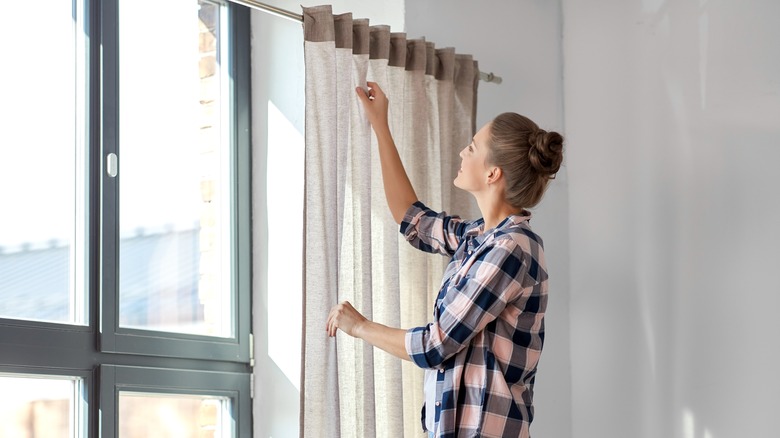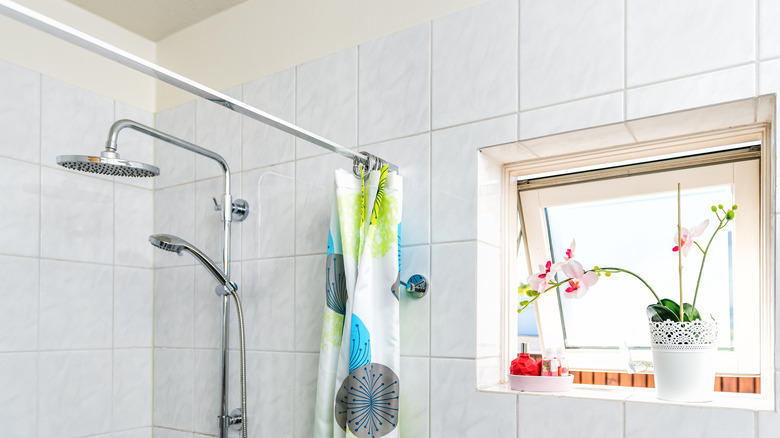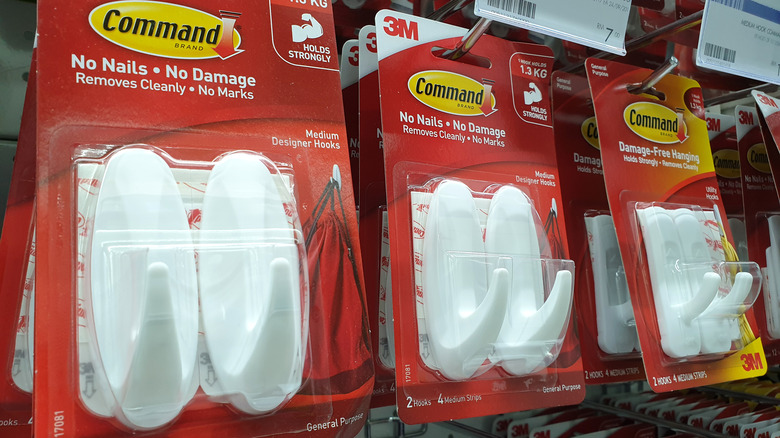Hang Curtains Without Drilling With These Tips
If you're renting and don't want to drill any holes in the wall or are dealing with a difficult wall material that can't easily be drilled into, such as brick, you might assume that it would be impossible to install curtains. However, that's absolutely not the case — all you need to do is purchase a tension rod.
Tension rods are essentially just long, typically adjustable rods with rubber no-slip end caps at either end. The respective end caps get positioned against a window frame or wall, and thanks to a spring within the rod, the tension keeps the rod in place. They're incredibly simple to install, usually fairly inexpensive, leave no marks, and can typically hold about 20 pounds of weight. And they're versatile enough to use in multiple spaces, from the bedroom to the bathroom. As an added bonus, they can be repurposed for many other uses, such as organizing kitchen items, if you one day decide to install regular wall-mounted curtain rods.
A tension rod can be a simple way to hang curtains that leaves no damage to your window frames or walls and requires no tools. However, you will have to consider a few limitations of this particular hanging method.
Limitations of tension rods
Tension rods are usually available in a few different colors, so whether you prefer something that's black, white, or metallic, you should have a few options to choose from. However, you're not going to get the same decorative finial options. Since the end caps serve a function beyond just being decorative and preventing the curtains from sliding off either end, they're more utilitarian than stylish.
Additionally, you obviously have to install a tension rod between two vertical spaces. This means you can't use the ceiling-heightening hack of hanging your curtain rod higher and wider than your windows to give the illusion that the window is larger. The rod must go within the window frame itself. And tension rods can only stretch so far, as they don't have any kind of support in the middle the way that regular wall-mounted curtain rods do, so if you're dealing with a larger window, they may not even be an option.
Finally, the weight limitation of the tension rod is there for a reason — you certainly don't want your curtains to come toppling down. However, it also means that you're restricted in the type of curtains you can select. Typically sheer or semi-sheer curtains will work just fine, as they tend to be quite light. If you're looking to hang blackout curtains or curtains crafted from a heavy material like velvet, though, they might be too weighty for the tension rod to handle.
Other no-drill ways to hang curtains
So you've determined that the tension rod approach won't work with your particular vision either because the window is too large, the curtain is too heavy, whatever the case may be. Don't fret, though — there are still a few other options that don't require you to break out the drill and make a permanent change to your room.
One easy solution you may be familiar with is adhesive hooks. Just like you might use these to hang art or other decorative accessories in your home, you can affix these removable hooks to your wall and place the curtain rod atop them. Unlike tension rods, they don't have to be mounted within your window frame, and you could even add additional hooks in the middle for extra support. However, they also have a weight limit and are only suited for narrow curtain rods and light curtains.
Those with metal window frames might consider magnetic curtain rods, which attach to your window frame without drilling. Like many of the other no-drill options, these aren't particularly well-suited to heavy curtains, so it again limits your options. And, they are slightly more prone than other methods to shifting and moving around, so they're not always the best choice for very high-traffic areas.


